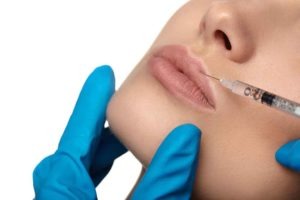 In 2016, Americans had botox 7 million times. About 100,000 of these were performed on the 20-29 age group who are more interested in preventative botox to avoid the signs of aging.
In 2016, Americans had botox 7 million times. About 100,000 of these were performed on the 20-29 age group who are more interested in preventative botox to avoid the signs of aging.
If you’re considering botox for the first time, you’ll naturally want to learn as much as you can. So how does Botox work? And how can you ensure that you’re making the right choice? Read on to find out.
What is Botox?
The FDA approved cosmetic botox back in 2002, and it has continued to grow in popularity ever since. However, it has been used for medical purposes like muscle spasms since back in 1989.
The real name for Botox is Botulinum Toxin A. And yes, Botulism is a type of food poisoning. But the type of botox used to treat wrinkles is an extremely watered-down version of this toxin.
How Does Botox Work?
When your muscles contract hundreds of times a day, wrinkles naturally begin to form. These tend to become more evident in your thirties, however, some people notice faint wrinkles in their late teens and early twenties.
Botox blocks these muscles from contracting. While Botox will only last for three to four months at a time, you’ll notice a smooth forehead and no more frown lines during this time period. If you continue to use Botox, the effects will also usually last for longer periods of time.
Of course, we’ve all seen bad Botox. This is when the forehead doesn’t move at all, or the person has a robotic face- with no real movement. It’s completely possible to be conservative with Botox and prevent wrinkles while still being able to make different expressions.
Looks range from conservative to high glam (frozen), and the earlier you begin Botox, the smaller amounts you’ll typically need.
Botox Injection Sites
Botox can be used in many different places, depending on where you’ve noticed the signs of aging. For some people, they may want to treat their laugh lines. Others may feel that their 11 lines (between their brows) are making them look annoyed or stern.
Here are some of the most popular places to get Botox:
Temples, Eyes, and Forehead
If you have an expressive face, you may notice that you’re getting horizontal forehead lines. These are also known as surprise lines, and they’re caused by repeatedly raising your eyebrows.
You may also get frown lines, which may be verticle or at a slight angle between your eyebrows. Many people also notice that they have crow’s feet, which are the horizontal lines at the corner of your eyes. Many people leave these alone as they see smile lines as an acceptable sign of aging. For others though, these lines can reach back into their temples or forehead.
These areas are some of the most common for Botox and respond well to treatment. It’s best to start with a low dosage to ensure you can still make most facial expressions. If you have too much Botox in your forehead, you may notice that your brows feel heavy and seem to hang down. That’s why it’s best to be conservative when you’re first treated.
Mouth and Chin
Areas around the mouth are also popular for Botox.
Smile lines can sometimes create large facial creases. These are the ones that stretch from the edges of your nose to the corners of your mouth. They’re known as your nasolabial folds.
Marionette lines are the ones that reach from your chin up to the corners of your mouth. If you smoke, you’ll also see vertical smokers lines, which become present early on and all around the lips.
Botox can help with minor lines in this area. However, if you have deep creases, you may need to consider fillers.
The Botox Procedure
The first step before you get Botox? Finding an experienced surgeon or dermatologist. It can be tempting to look for cheap Botox through deals on Groupon and other websites. But Botox requires an experienced touch- especially if you’re hoping for a natural result.
Getting Botox is quick and easy. It only takes a few minutes, and you won’t need any anesthesia. You may be given some gel to numb the area or some ice to help prevent swelling. The injection is very fine, so you may feel a tiny pinprick, but that’s it.
Avoid using anti-inflammatories in the week leading up to Botox. You may want to take arnica for a few days before your appointment to help prevent bruising. While bruising is a common side effect, this depends on both “dumb luck” and the experience of your doctor.
One of the most common causes of bruising is hitting a blood vessel if the Botox is injected too deep. However, experienced doctors will be able to prevent this.
Should You Get Botox?
Whether you’re just noticing fine lines and hoping to prevent further signs of aging, or you’ve had deep lines for many years, Botox can be a good choice. However, it’s important to consider whether you’re getting it for the right reasons.
You should only get Botox if it’s something that you’re doing for yourself- and not due to peer pressure or filters which make everyone look young on Instagram.
If you’re wondering whether Botox is right for you, it may be a good idea to try a small amount in one area. That way, you can see if it’s a good choice and it will only last a few months if you’re unhappy.
Wrapping Up
While Botox used to only be available for the rich and famous, it’s now more affordable for the general public. And while it used to be something that people kept to themselves, it’s now seen as just another way to take care of yourself for many people.
If you’re considering getting Botox and have asked yourself “how does Botox work?”, make sure you choose an experienced, qualified doctor for the best results. If you’d like more information or a consultation, get in touch today to learn more.

